What is a Mirrorless Camera?
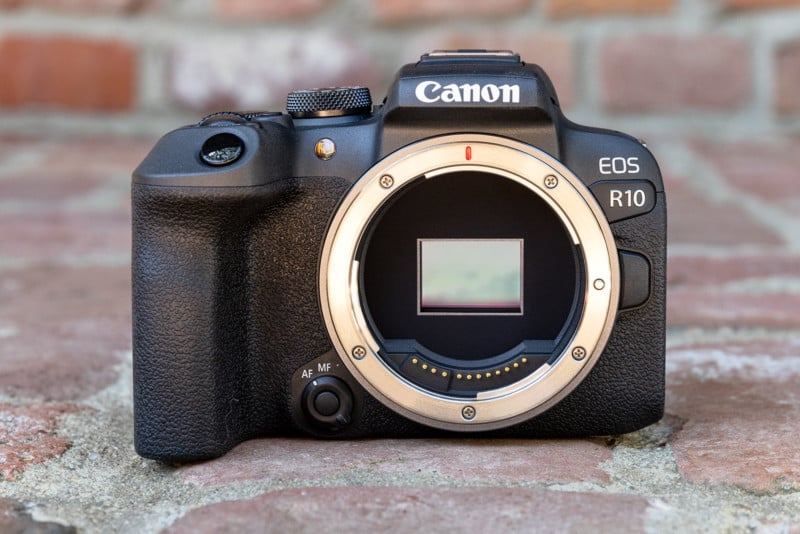
There is a constant push for faster and lighter technology across different industries, including laptops, smartphones, drones, cameras, and more. In the photography world specifically, mirrorless cameras have appeared on top of the race to overtake DSLR cameras as the industry standard camera for still photography.
Table of Contents
What Does Mirrorless Mean?
You might bring a mirror to your portrait shoots so that your client can see how their hair looks mid-shoot. As their name implies, mirrorless cameras eliminate this need! Alright, that’s wishful thinking and not true at all. However, mirrorless cameras lack a photography-related mirror, just not one you can usually see.
In DSLR cameras, a mirror sits between the lens and the camera sensor. It is situated at a 45-degree angle and directs the light from the lens up toward the optical viewfinder for you to see. This is how you are able to see a scene through a DSLR’s viewfinder, even when it’s turned off.
When the shutter button is pressed, the mirror flips down and reveals the sensor which ultimately leads to the creation of a digital image. There are a few drawbacks to this process, including the space requirement and time that it takes to move the mirror.
Mirrorless cameras eliminate the mirror, which makes for a faster and smaller camera with the potential for better autofocus.
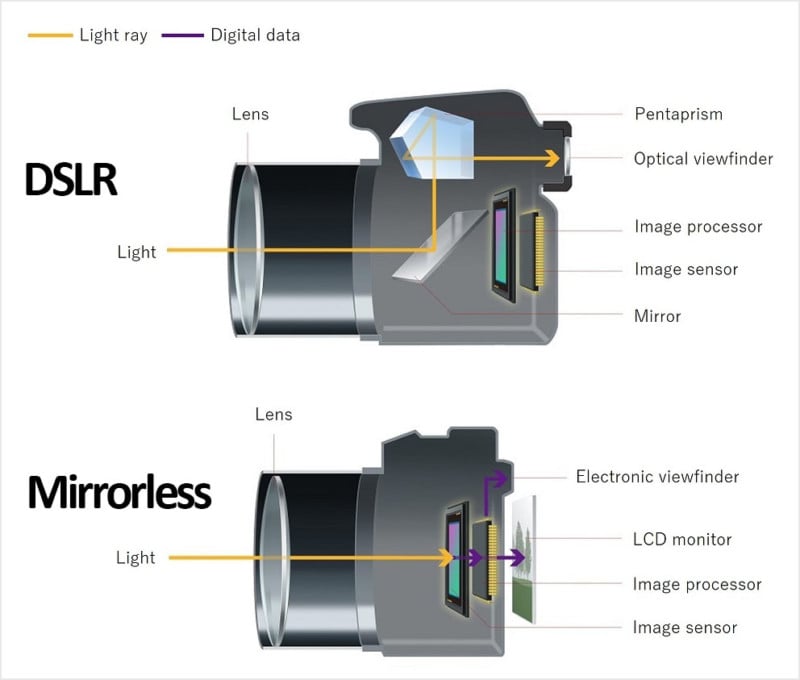
The Electronic Viewfinder (EVF)
Instead of a mirror mechanism working to allow you to preview your image, mirrorless cameras use something called an electronic viewfinder, or EVF for short. Essentially, light goes through the lens straight to the sensor, then it is converted directly to digital information that is displayed in the EVF or on the LCD screen.
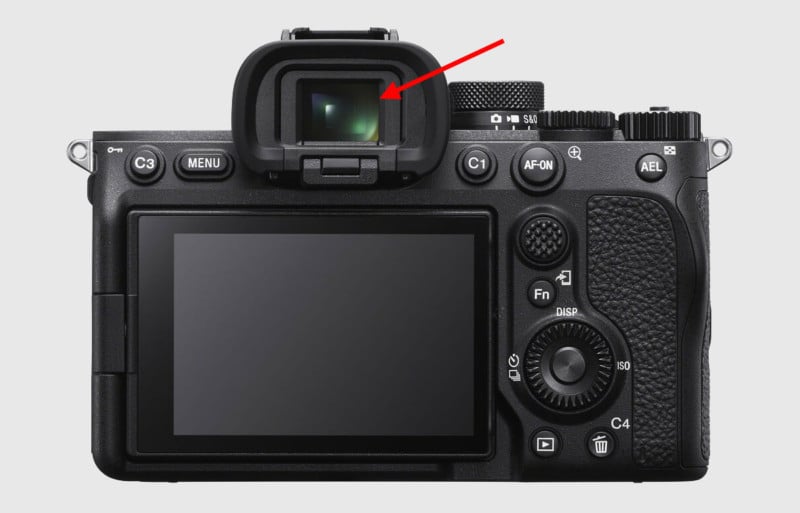
The EVF is basically a tiny screen on its own, and some mirrorless cameras have the capability to do image playback via the EVF itself. This is useful when shooting in bright conditions. Just like a TV screen, different cameras have different EVF resolutions, which can provide a better or worse viewing experience.

One interesting difference between mirrorless and DSLR cameras is that when using an EVF, the preview is what the image will look like when captured. For example, if your image is overexposed, you will be able to see that through the EVF. On a DSLR camera, the preview is separate from what the sensor captures, so the final image can be drastically different from what you see through the viewfinder.
Think of the EVF as a tiny version of the live view on a DSLR, which is the function that displays your image preview on your main LCD screen.
Advantages of Mirrorless Cameras
Sound. Without a mirror mechanism moving around, the shutter on a mirrorless camera can be silent. Some cameras use an artificial clicking sound to help the photographer know when a photo has been taken. In fact, that sound might be customizable in future cameras.
Speed. Although DSLR cameras can have high continuous frame rates, mirrorless cameras are generally faster due to the fact that they don’t have to perform as many physical movements when the shutter button is pressed. This makes mirrorless cameras great choices for wildlife, sports, and other action photographers.
Digital technology. Since mirrorless cameras use more digital technology in previewing an image, there are opportunities for better autofocus and more information to be relayed to the photographer before an image is created. Take the Canon R3’s eye-controlled autofocus, for example. The camera will, in theory, focus where your eye is looking.
Electronic viewfinder (EVF). There are lots of advantages of using an EVF. Just like live view, the EVF allows the photographer to see the image as it will be captured. The EVF can also act as a small screen to perform image playback. Since it is a screen, it can also be overlaid with lines or other information that can’t necessarily be shown using an optical viewfinder.
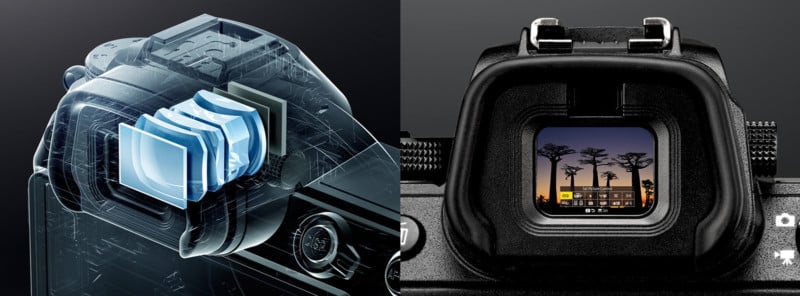
Size. Mirrorless cameras can be smaller than DSLRs because they have fewer moving parts. This makes them attractive for travel photographers, or anyone who just wants a more portable camera. You might use your camera more often if it’s easier to take with you wherever you go.
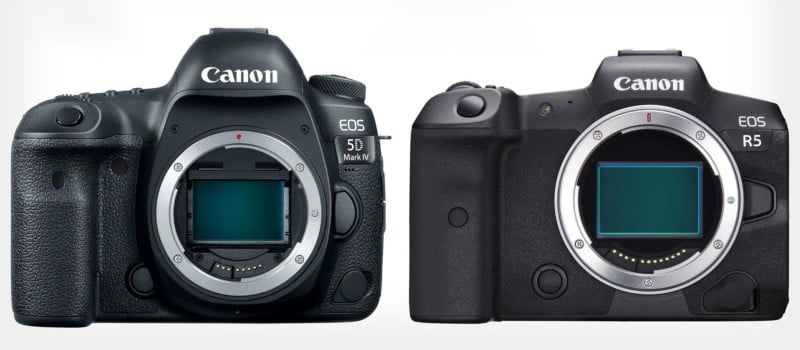
Shorter flange distance. One of the reasons mirrorless cameras can be smaller in form factor is that they allow for a shorter flange focal distance, or the distance from the lens mount (the flange) to the image sensor. The shorter the flange distance, the thinner (and lighter) a camera can be.
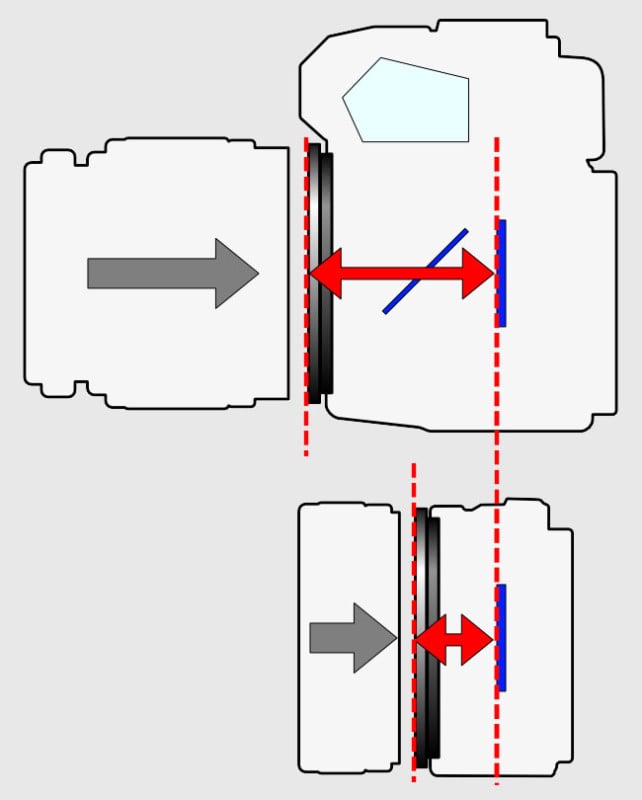
Adapted lenses. A shorter flange distance also allows for lenses (i.e. those designed for equivalent DSLRs) to be used with an adapter that increases the flange distance. For this reason, DSLR lenses can often be adapted for mirrorless cameras but mirrorless lenses generally cannot be adapted for DSLRs. Canon and Nikon photographers switching from Canon EF to Canon R or from Nikon F to Nikon Z can bring their existing collection of lenses to mirrorless thanks to lens adapters offered by the companies.
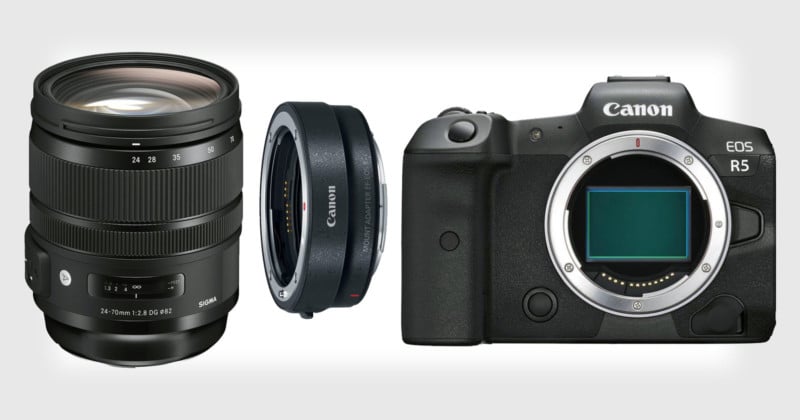
Disadvantages of Mirrorless Cameras
Native lens selection. With newer camera systems come newer lens mounts that aren’t necessarily compatible with older lenses. Companies are working hard to increase their selection of mirrorless lenses, but so many years went into making lenses for SLRs and DSLRs that it will take time to have a similar selection for mirrorless. Even if there are adapters to allow older lenses to work on mirrorless cameras, they often come at the expense of quality (and money).
Battery life. Smaller camera bodies sometimes mean smaller batteries, but the real issue with battery life is that mirrorless cameras have to power two screens (the LCD and EVF). It takes a significant amount of power to keep the EVF working, whereas it doesn’t take much power to move the mirror mechanism in a DSLR and, unless you’re shooting in live view, there’s no need for a digital display to be constantly powered.
Cost. Mirrorless cameras can be expensive, and they can also be cost-effective. However, the fact that you might want more batteries or a lens adapter (just to name a few additional costs) means that mirrorless cameras have the opportunity to be expensive. DSLRs and other cameras do too, but with the new and exciting technology that mirrorless cameras boast, it’s likely that accessories for them will be more expensive.
Accessory compatibility. Speaking of accessories, this is an issue that’s similar to the lens compatibility problem. Companies are torn between different camera markets and they aren’t necessarily focused on the mirrorless industry enough to keep up with the demand. There are plenty of accessories that have been developed for mirrorless cameras, but there are also areas where DSLR cameras still have a greater number of accessories.
General industry knowledge. Since DSLR cameras have dominated the still photography market for the past decade or so, they are better tested and reviewed, and there is more general industry knowledge surrounding DSLR cameras. That’s not to say that there aren’t great mirrorless camera resources, but DSLR cameras have the advantage of being leaders for longer.
A Brief History of Mirrorless Cameras
Mirrorless cameras have come a long way in the past decade, and are continuing to shatter records in the camera world. The first digital interchangeable-lens camera without a mirror was released in 2004, the Epson R-D1.
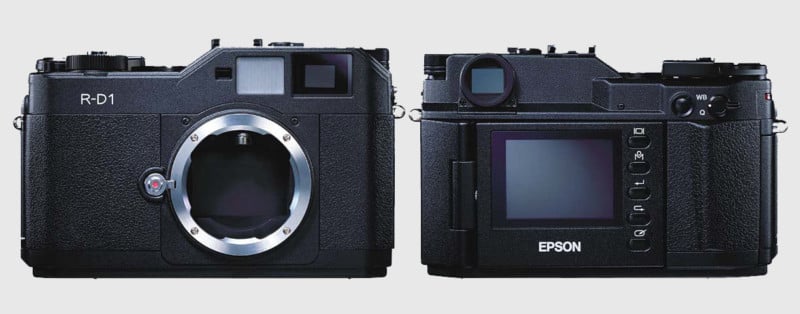
This was followed by the Leica M8, but these both are usually not regarded as true mirrorless cameras because they do not have a digital mechanism to preview images.
2008 brought the first commercially available “true” mirrorless camera, the Panasonic Lumix G1. This camera, and many others that followed, used the Four Thirds sensor system, which is smaller and has a different shape than an APS-C or full-frame sensor. This system is still around and is used commonly today.
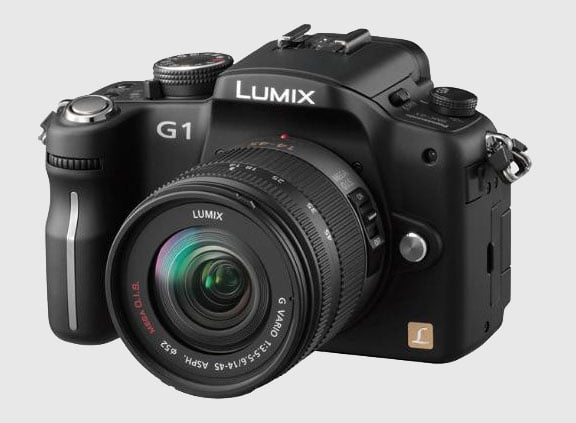
In 2010, Sony released the NEX-3 and NEX-5 mirrorless cameras. These would pave the way for the first full-frame mirrorless camera down the road. A year later, Nikon released the J1 and V1 mirrorless cameras, which had high-resolution EVFs and high continuous shooting speeds. While these seemed like they would revolutionize the photography industry, they didn’t perform as well as they promised.
Sony essentially changed the mirrorless market with the 2013 introduction of the Sony a7 and a7R, which were the first mirrorless cameras with full-frame sensors capable of autofocus. They weren’t cheap, but they began the full-frame mirrorless run that we still experience today.
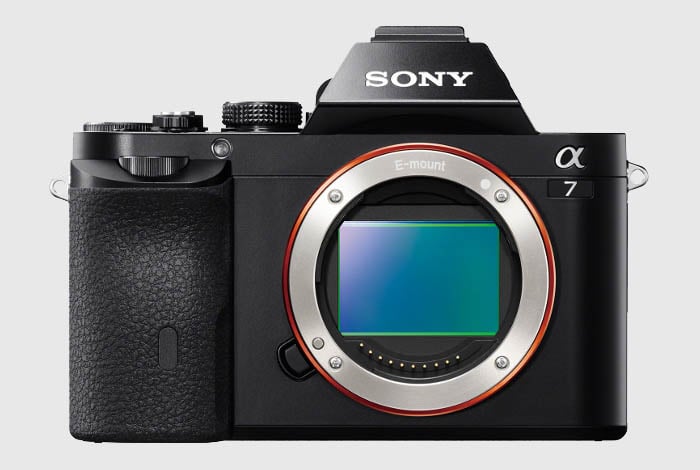
Fujifilm followed in 2016 by introducing the GFX 50S, a mirrorless camera with a 51.4-megapixel sensor. This proved that there were impressive high-resolution possibilities with mirrorless systems, and the term “mirrorless” didn’t have to mean that the camera was any lower resolution than a non-mirrorless camera. Additionally, 2016 brought the Olympus OM-D E-M1 Mark II, a Micro Four Thirds system that held its ground against DSLR and other larger-sensor mirrorless cameras.
In 2017, Sony announced the a9 mirrorless camera, with 20fps continuous shooting. The Sony a7RIII was also announced this same year, with 10fps continuous shooting at 42 megapixels.
2018 was Nikon’s return to the mirrorless world, with the full-frame mirrorless Z6 and Z7 cameras. Canon followed one month later with a first full-frame mirrorless camera, the Canon EOS R. Up until this point, Canon and Nikon had both tried to enter the mirrorless market, but Sony was the clear winner.
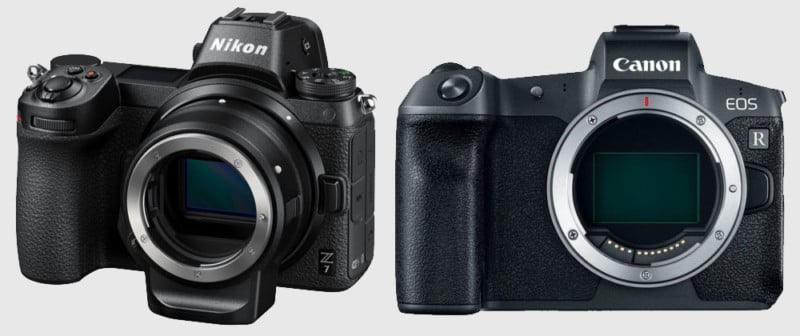
Today, the flagship Sony Alpha 1 mirrorless camera has a 50.5-megapixel sensor and will shoot up to 30fps continuous shooting. The Canon EOS R3 was announced in 2021 and features a 24.1-megapixel sensor with up to 30fps continuous shooting. It also features 1,053 autofocus points, which can be controlled with the photographer’s eyes. The Nikon Z9 has a 45.7-megapixel sensor and will shoot 20fps raw images.
Panasonic, Fujifilm, and Olympus also make leading mirrorless cameras that have an incredible bang for your buck. While they might not shatter the leaderboards for speed and resolution, their image quality rivals the flagship mirrorless cameras of other companies.
Who knows what we’ll see in the future of mirrorless cameras in addition to a lot of speed, resolution, and impressive (8K and beyond) video capabilities?
While DSLRs can still hold their ground in terms of resolution and speed, mirrorless technology has quickly caught up and is nearing the point where it will surpass DSLR technology (if it hasn’t already). More lenses are becoming available, and big names in the DSLR world have already stated that they won’t be making any more flagship DSLR cameras in favor of the mirrorless revolution.
Conclusion
If you’re thinking you want to dive into the mirrorless world after reading this, check out our picks for the top mirrorless cameras on the market today. They’re generally faster and lighter than DSLR cameras and come with quirks and perks that make them really interesting cameras.
One thing’s for sure: mirrorless cameras are likely the near future of serious still photography. Just based on the investments that major camera companies are making, the next decade is when we will see mirrorless cameras dominate the industry, just like DSLRs did for the past decade.
Image credits: Header photograph by Ryan Mense.